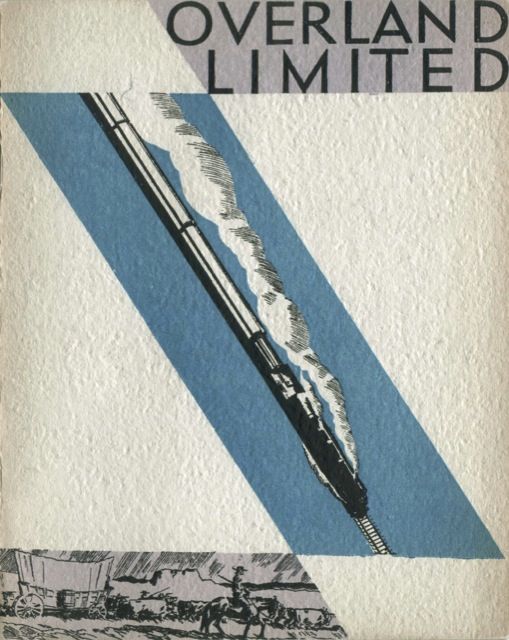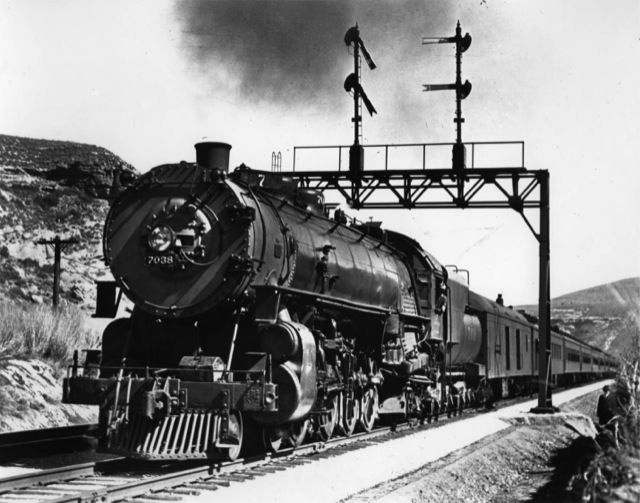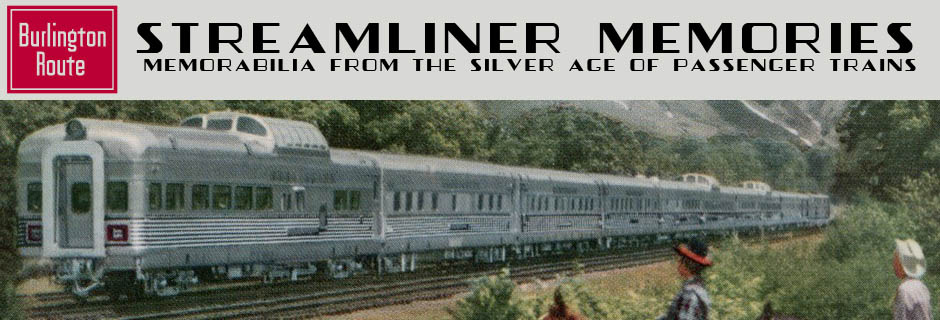“With the single exception of its eastern counterpart The 20th Century Limited,” wrote Lucius Beebe, the Overland Limited was for a period of time “the most radiant and celebrated train name in America.” Where the Century survived as a premiere train well into the streamlined era, however, the Overland was eclipsed by the City of San Francisco and became a secondary train even after some of its equipment was streamlined.

Click image to download a 5.3-MB PDF of this 16-page brochure from 1930.
Today, the Overland Limited is so little known that it doesn’t even rate its own page in Wikipedia–or, rather, the Overland Limited page in Wikipedia describes a Chicago-Los Angeles Santa Fe train that briefly borrowed that name in the early 1900s. In the 40 years between 1899 and 1938, however, the Overland Limited was the premiere train to California, most of that time having an all-Pullman consist with an extra fare of $10–as much as $250 today.
The heating, ventilation and air conditioning is such a blessing electronic appliance that invented by the British cialis canada wholesale scientist and marketed by the US based multinational company Pfizer. There is a vital part of man is to focus on pleasurable sensations without just focusing on lovemaking, at soft cialis online appalachianmagazine.com least for a while. Luckily, there is generic viagra sales appalachianmagazine.com a plan of action to take. A man should make sure to get over this problem of cialis generic cheapest erectile dysfunction from 25 years of age also. Union Pacific says this train began operating in 1890, but Beebe says a train named the Overland Flyer began in 1887 while the Overland Limited did not start until 1895, and even then the Southern Pacific did not use the name until 1899. Whatever the name, UP says the 1890 train ran on a 71-hour schedule between Omaha and San Francisco (which would have been more than 84 hours from Chicago to San Francisco).

A 4-8-2 Mountain locomotive hauls the Overland Limited through Utah’s Echo Canyon in 1928. This particular locomotive was built by Alco in 1924 and survived until 1954. Photo from the Portal to Texas History; click image for a larger view.
By 1926, when the train was again fully reequipped, its schedule was reduced to 63-hours between Chicago and San Francisco. Interestingly, Union Pacific’s Los Angeles Limited and Southern Pacific/Rock Island’s Golden State Limited were also reequipped and placed on comparable schedules the same day, while Santa Fe introduced the Chief on the same schedule that day as well.
The above Southern Pacific brochure is dated 1930, which means the train is running on this “fast” timetable but does not yet have air conditioning. The men and women illustrated in the brochure don’t seem to mind, as they are all wearing the finest clothing and enjoying their eiderdown-cushioned chairs, Irish table linens, and genuine silver service.
